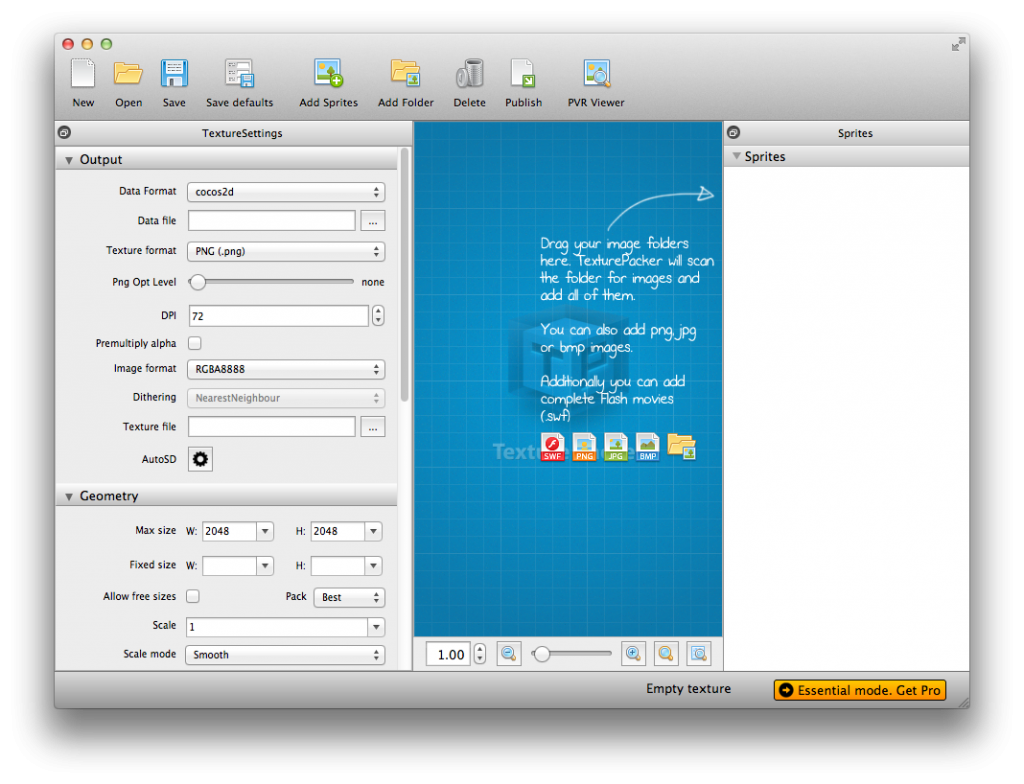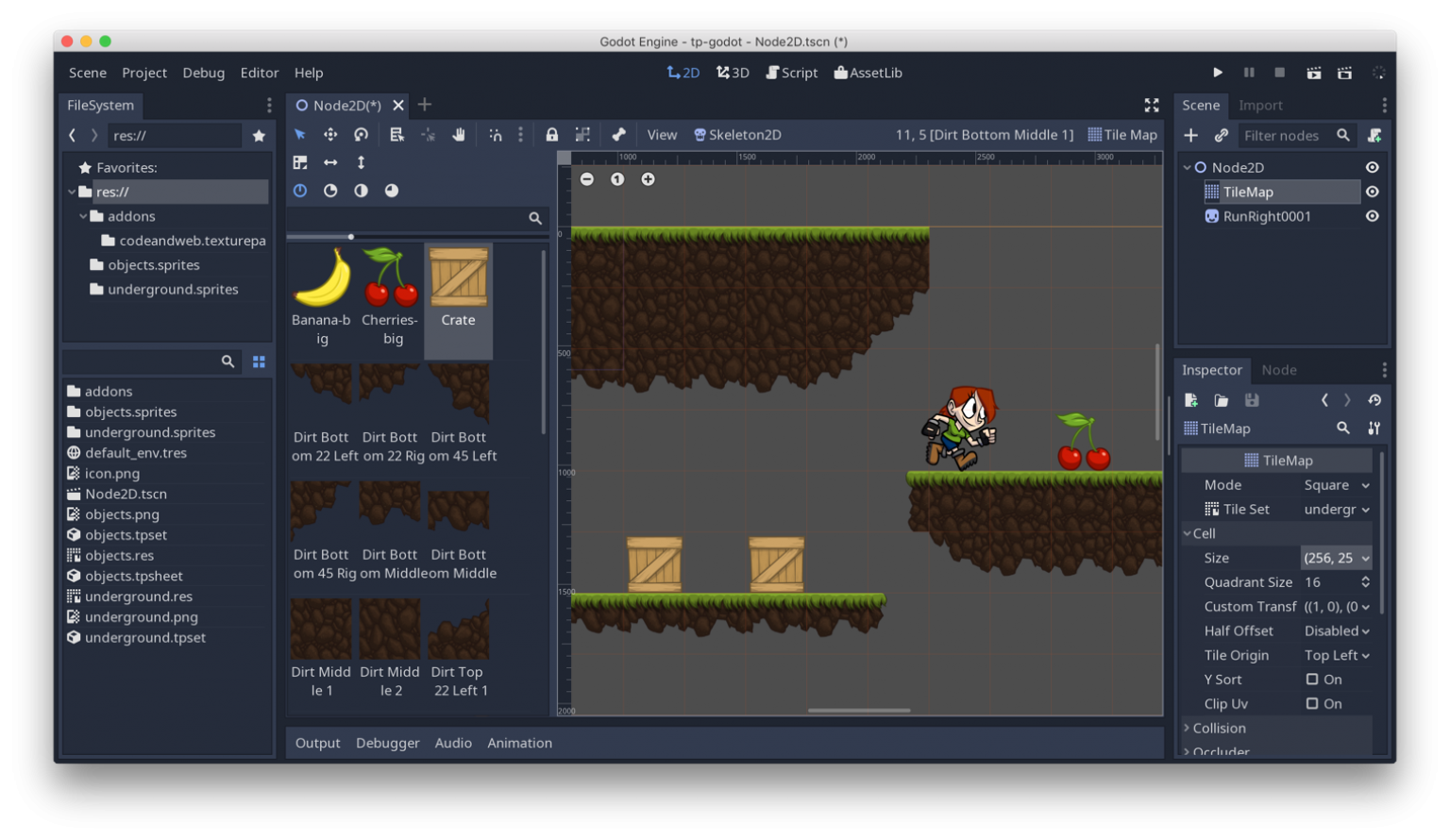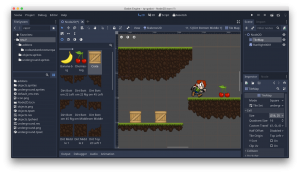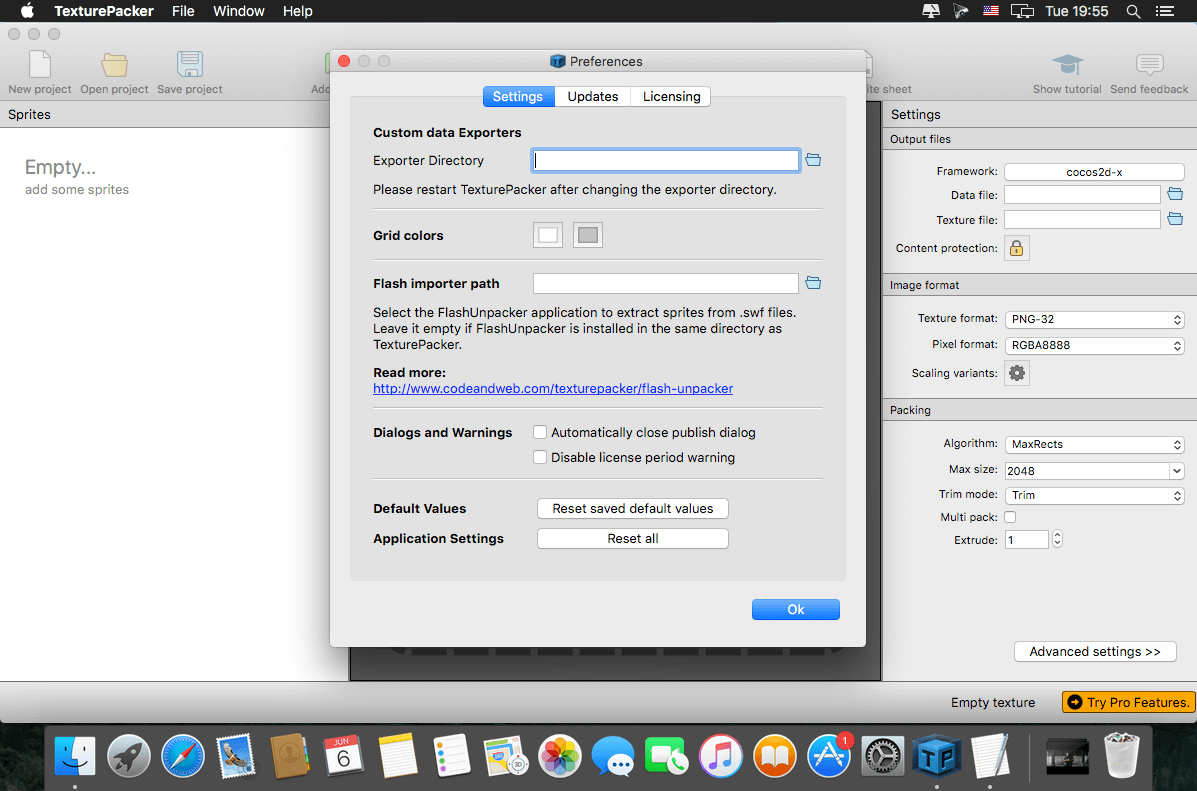
By using TrueType fonts you can easily render character glyphs of various sizes without any loss of quality.įreeType can be downloaded from their website. Similar to vector images, the rasterized font images can be procedurally generated based on the preferred font height you'd like to obtain them in. What makes FreeType particularly attractive is that it is able to load TrueType fonts.Ī TrueType font is a collection of character glyphs not defined by pixels or any other non-scalable solution, but by mathematical equations (combinations of splines).

Texturepacker failed to load image mac os#
It is a popular library used by Mac OS X, Java, PlayStation, Linux, and Android to name a few.
Texturepacker failed to load image software#
One of these approaches is loading TrueType fonts using the FreeType library.įreeType is a software development library that is able to load fonts, render them to bitmaps, and provide support for several font-related operations. This approach was quite popular back in the day (and still is) since it is fast and works on any platform, but as of today more flexible approaches exist. Furthermore, it is limited to a small character set, so Extended or Unicode characters are often out of the question. When you want to use a different font, you need to recompile a complete new bitmap font and the system is limited to a single resolution zooming will quickly show pixelated edges. However, it is not particularly flexible. It is relatively easy to implement and because bitmap fonts are pre-rasterized, they're quite efficient. This approach has several advantages and disadvantages. This particular bitmap font was generated using Codehead's Bitmap Font Generator. By enabling blending and keeping the background transparent, we will end up with just a string of characters rendered to the screen. Here you can see how we would render the text 'OpenGL' by taking a bitmap font and sampling the corresponding glyphs from the texture (carefully choosing the texture coordinates) that we render on top of several quads. Whenever you want to render a character, you select the corresponding glyph by rendering this section of the bitmap font to a 2D quad. Each glyph has a specific region of texture coordinates associated with them. These character symbols of the font are known as glyphs. Such a texture, that we call a bitmap font, contains all character symbols we want to use in predefined regions of the texture.

In the early days, rendering text involved selecting a font (or create one yourself) you'd like for your application and extracting all relevant characters out of this font to place them within a single large texture. In this chapter we'll explore several methods and implement a more advanced, but flexible technique for rendering text using the FreeType library.

Rendering textured quads by itself shouldn't be too difficult, but getting the relevant character(s) onto a texture could prove challenging. Most developers choose to render character textures onto quads. Some example techniques are: drawing letter shapes via GL_LINES, create 3D meshes of letters, or render character textures to 2D quads in a 3D environment. There are no graphical primitives for text characters, we have to get creative. Since there is no support for text capabilities within OpenGL, it is up to us to define a system for rendering text to the screen. Based on where you live, you may also need more than 128 characters, and what if you want to express special symbols for like mathematical expressions or sheet music symbols, and what about rendering text from top to bottom? Once you think about all these complicated matters of text, it wouldn't surprise you that this probably doesn't belong in a low-level API like OpenGL. Things are getting difficult as soon as each character has a different width, height, and margin.

If you don't care about rendering more than 128 different same-sized characters, then it's probably not too difficult. Contrary to what you may expect, getting a simple string to render on screen is all but easy with a low-level API like OpenGL. Text Rendering In-Practice/Text-RenderingĪt some stage of your graphics adventures you will want to draw text in OpenGL.


 0 kommentar(er)
0 kommentar(er)
